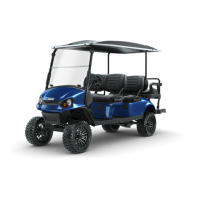28
OPERATION
STALLING ON A HILL
A rollover can result from stalling or rolling backward while climbing a hill. Drive uphill at a constant speed.
If your vehicle completely stalls while climbing a hill:
1. Apply the brakes.
2. Verify that the area behind you is clear.
3. Put the direction selector in R (reverse).
4. Use steady brake pressure to control speed, and allow the vehicle to slowly roll straight downhill.
If your vehicle begins to roll downhill:
1. Do not press the accelerator.
2. Apply the brakes gradually until the vehicle fully stops.
3. Verify that the area behind you is clear.
4. Put the direction selector in R (reverse).
5. Use steady brake pressure to control speed, and allow the vehicle to slowly roll straight downhill.
DRIVING IN REVERSE
When driving in reverse, follow these guidelines:
• Check that the area behind the vehicle is clear of obstacles and people.
• Check left and right fields of vision before driving in reverse.
• Do not back down a steep hill.
• Drive in reverse slowly.
• Press the brakes lightly for stopping.
• Accelerate slow and steady.
• Avoid turning at sharp angles.
PARKING THE VEHICLE
NOTICE: When parking the vehicle in cold climates (0°C, 32°F), the car should be stored in an enclosed
garage.
Park the vehicle away from any source of flame or sparks, including any appliance with a pilot light.
Park the vehicle on a flat surface if possible. If parking on an incline is unavoidable, be sure to
chock the wheels as shown in the following illustration to keep the vehicle from rolling.
1. Press the brake to stop the vehicle.
2. Engage the parking brake.
3. Turn the key switch to OFF.
4. Remove the key from the ignition to prevent unauthorized use.
5. If parking on an incline, chock the wheels on the downhill end as shown in the following illustration.

